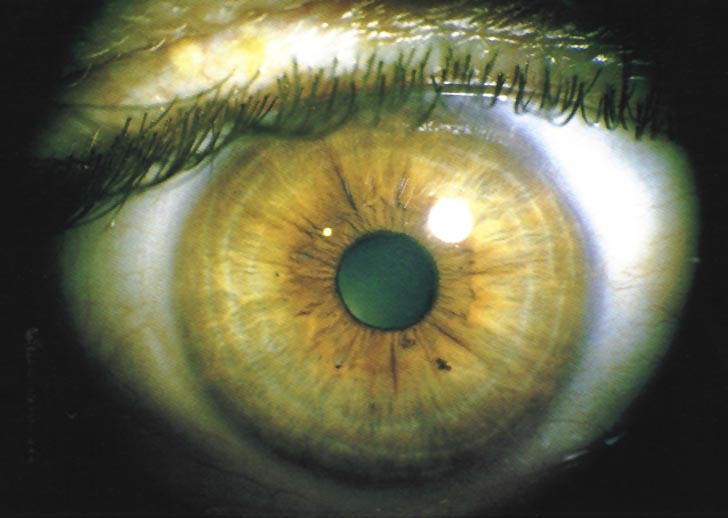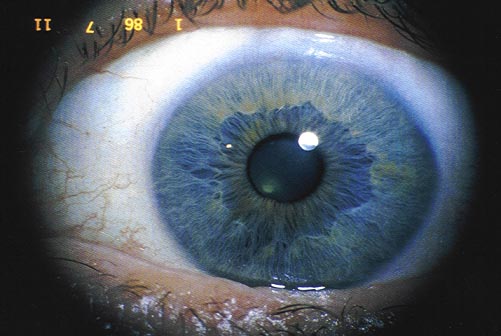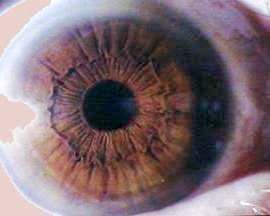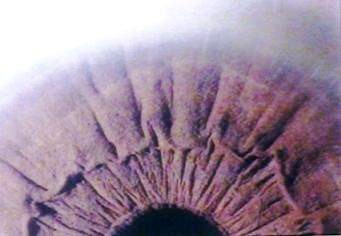CALCAREA
CARBONICA
Alteration of the calcium's metabolism, rachitis,
spasmophilia, bronchial asthma, tetany, obesity, nodulus erythema,
acme.
The patient gets better with dry weather and
constipation. He gets worse with humidity and fear.

|
Inner pupillary border: Brown color, squared, with
unequal distances.
Crown's area: Flat.
Iris collarette: Normal, well outlined.
Ciliary zone: Nerve rings. Insufficiency
of the hypophysis, the thyroid, the gonads and the suprarenal glands
(furrows).
|
|
SEPIA
Venous congestion, ptosis of the organs,
sympathetic dystonia, headache, constipation, liver insufficiency,
liver congestion. Worse with standing, cold or after lunches. Better
with warmth and cold drinks.

|
Inner pupillary border: Brown color that tends to
become greyish, with the morphology of a compressed spring. A
characteristic mark is the presence of two symmetrical fattenings in
the first hour at the left iris and in the eleventh hour at the right
one.
Crown's area: The crown is widely
presented, with a predominance of the parasympathetic. On account of
this, we have a vasoconstriction at the periphery and an increased
sexual activity (that can be responsible for a disturbance). The
inflated crown signifies constipation caused by an intestine's atony
and biliary colics caused by the bilestones. The color of the crown is
dirty yellow, because of the deposition of the bilirubin in the
fibres.
Iris collarette: Normal and white. It is
possible that there is an opening at the area of the liver, which means
an insufficiency of the organ.
Ciliary zone: Liver's and female's
reproductive system areas are compromised.
Interior edge of the iris: Presence of small
yellow flakes, called cotton wool spots or tophi, mainly at the
inferior hemisphere, which mean skin problems, typically of Sepia,
brown spots in the face, herpes, psoriasis, eczema.
|
|
|
|


